Best Paint Rollers

It's never simple to choose the ideal paint hue, not even white (is it mascarpone, snow, or dove?).
Similarly, making certain decisions is necessary while selecting the best paint rollers. (Which paint roller frame size, four or nine inches is required? Foam or polyester? 3-eighth or two-eighth inch nap?
You'll spend more time selecting the paint color and less time fussing over painting supplies if you follow our advice on selecting the finest paint roller.
Below we have explained some useful tips about choosing the best paint rollers for walls.
Important Tips When Buying the Best Paint Rollers
If you are looking for the best paint roller for a smooth finish, you must first pay attention to its fabric, size, and pile height.
Paint Roller Fabric
When choosing the cloth for your paint roller, keep the following important things in mind:
Material
There are many different types of paint roller textiles available, such as synthetic fibers like polyester and nylon and natural fibers like mohair.
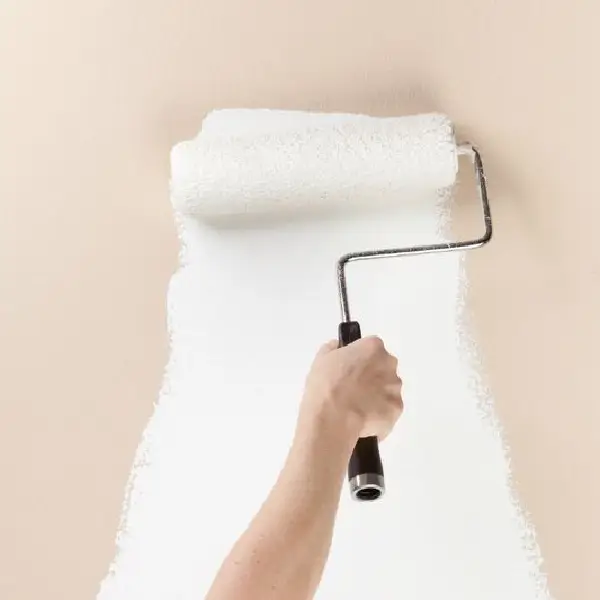
image sourced from here
While synthetic rollers are more adaptable and can be used with both oil-based and water-based paints, mohair rollers are renowned for their durability and suitability for oil-based paints.
For more information about different types of paints, click here.
There are 3 types of material for the best paint rollers:
- Polyester: Most rollers used nowadays are made of a poly (synthetic) material. Polyester is the all-purpose material for all paints, stains, and surfaces. With one exception, according to Sloan, she wouldn't recommend combining gloss paint with polyester roller sleeves.
- Wool Lambswool is a classic material that works well with paintings that have a solvent basis. Although it takes a little longer to break in, this material can withstand repeated uses. Professionals typically value this kind of roller because of this.
- Foam: When it comes to protective treatments like stains or lacquers, foam rollers work well. Different densities of foam rollers are selected for particular purposes. For instance, a slit-foam roller may be used to paint over bumpy or acoustic surfaces, while high-density foam rollers are useful for thinner coats or when attempting to create a fine finish on flat surfaces.
Core Material
The roller's core may be composed of wood, metal, or plastic. Metal cores are more robust and appropriate for heavy-duty applications, but plastic cores are less costly and lighter.
Although less robust than metal or plastic cores, wooden cores are nonetheless environmentally beneficial and are known as the best paint rollers.
Compatibility
Verify that the paint type you're using and the roller cloth you select are compatible. While certain textiles are ideal for water-based paintings, others are made expressly for oil-based paints.
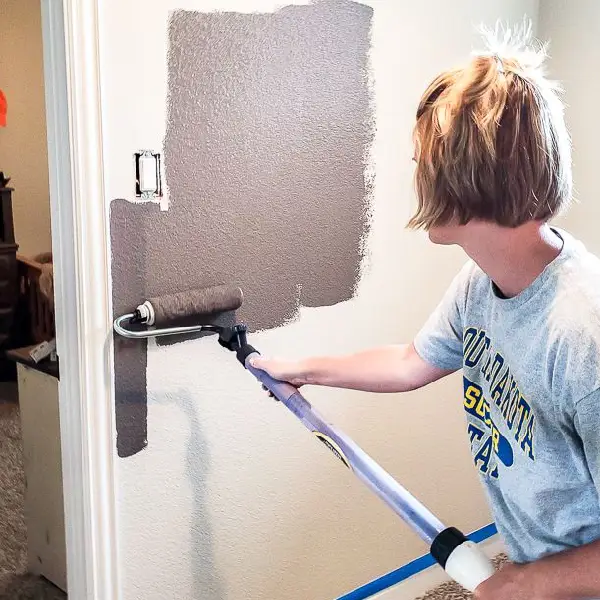
image sourced from here
Do not you know the difference between water-based and oil-based paintings? Click here for more information.
Size of Paint Rollers
The roller cover's capacity to contain paint and the area it can cover with each stroke is determined by its size. This thorough guide will assist you in choosing the right paint roller size.
The surface you will be painting and the kind of paint you will be using should be taken into account when selecting the best paint rollers.
A broader roller (9 inches or more) is usually more effective on bigger surfaces because it can cover a larger area with each stroke. A narrower roller (4 inches or less) could be more suited for intricate work or smaller surfaces.
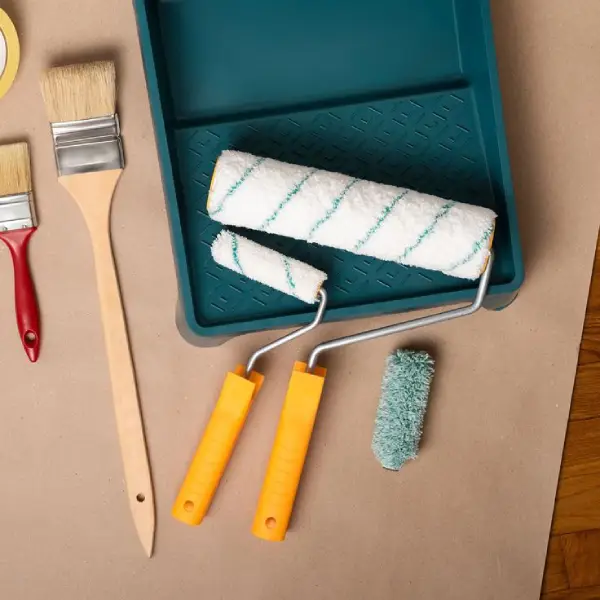
image sourced from here
In addition, consideration should be given to the surface's texture. Smooth surfaces might just need a thinner nap roller, while rough surfaces can need a thicker one to make sure the paint goes into all the nooks and crannies.
Pile Height
The length of the fibers on a paint roller's roller cover is referred to as the pile height.
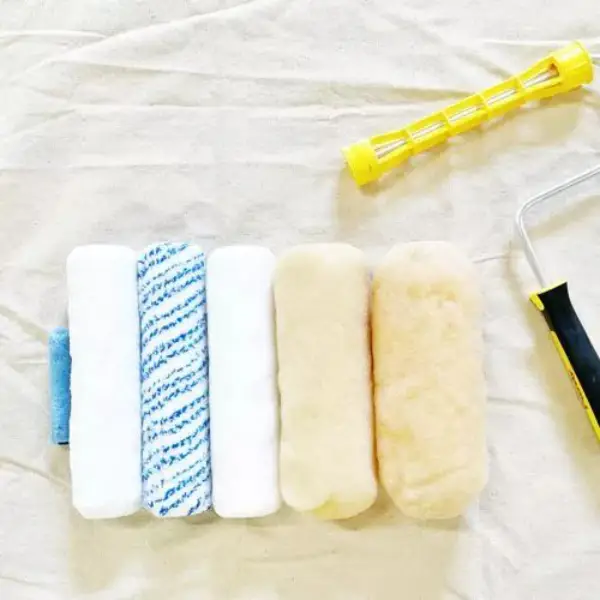
image sourced from here
Millimeters or inches are used to measure it. The amount of paint the roller can handle and the final surface's texture are both determined by the pile height.
- Short Pile (less than 1/4 inch): Perfect for flat surfaces such as plastic, metal, or walls that have already been painted. It gives a finish that is nearly airless and silky. Ideal for putting on light paint or priming applications.
- For the majority of interior painting applications, the medium pile (3/8 inch to 1/2 inch) is adaptable and appropriate. Conceals small surface flaws by giving a somewhat rough finish. Excellent for painting with both water- and oil-based paints.
- High pile (at least half an inch): Ideal for coarse or textured surfaces such as concrete, brick, or stucco. Enhances coverage by holding more paint. Produces a textured or stippled finish. Ideal for putting on heavy coats or paints.
Different Types of Paint Roller
Paint rollers come in five primary varieties, each intended for a particular use: manual, pad, textured, specialized, and small paint rollers.
It's crucial to comprehend how these sorts differ in order to pick a paint roller for your upcoming job.
1. Manual paint rollers
A manual paint roller is the most often used kind of paint roller. These are the common paint rollers that are the best paint rollers for ceilings.
They have a basic handle, frame, and revolving metal roller. If they have the appropriate paint roller cover, they may also be used outside to paint external surfaces.

image sourced from here
These paint rollers have the disadvantage of sometimes being too lengthy for painting thin surfaces like doorframes and baseboards. On the other hand, manual rollers are among the least expensive varieties.
2. Paint rollers with pads
Pad rollers are not rollers, although they are nevertheless categorized as such. They use a flat pad with straight, uniform strokes to absorb and discharge the paint onto the target surface.
These rollers' shape lessens the likelihood of paint splatters, which are frequently caused by hand paint rollers.
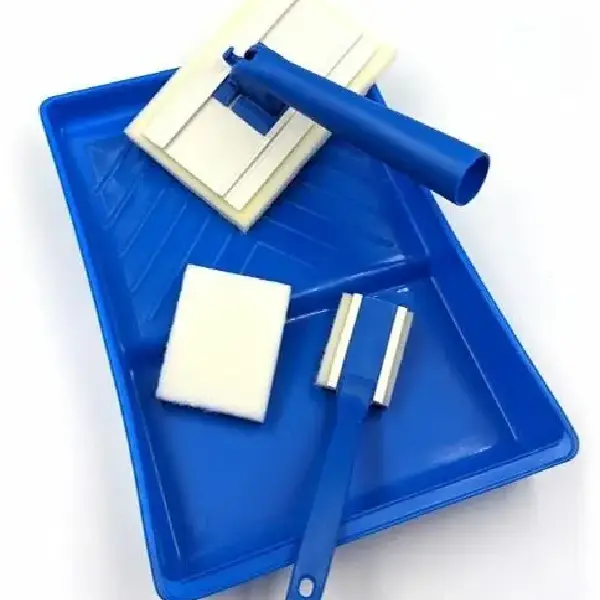
image sourced from here
However, paint pads aren't particularly excellent at concealing deeper or brighter colors since they only apply a thin layer of paint to the wall, ceiling, or any other surface.
Do not you know how to paint with a paint roller? Click here for a step-by-step guide.
3. Paint rollers with texture
The term "textured paint roller" really describes the roller sleeve rather than the roller itself. Using a textured paint sleeve and a manual roller, you may replicate patterns or designs such as wood grain, brick, or stone textures.
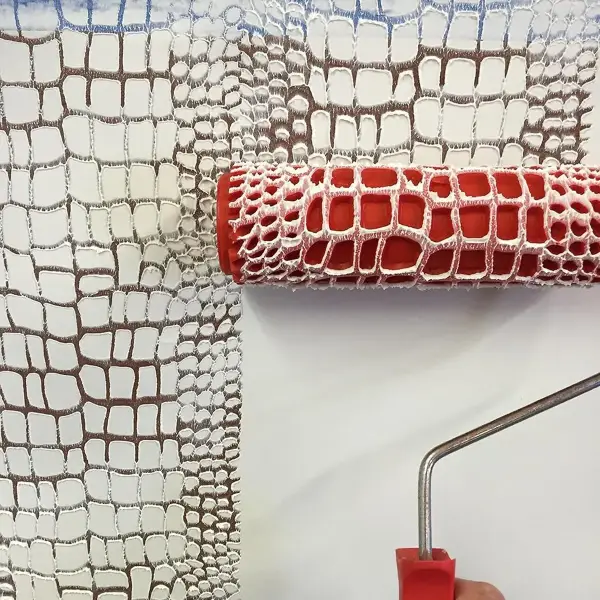
image sourced from here
To achieve the desired effect, the sleeves are composed of foam with individual designs carved in.
However, tiny walls may not be able to fully appreciate these patterns, so for bigger walls where the pattern is more visible, textured paint rollers are the ideal option.
4. Specialty paint rollers
A specialized paint roller is used to generate unique paint patterns, much like textured paint rollers.
Specialty paint rollers are not your average manual paint rollers with a novel roller sleeve; this is the primary distinction between the two varieties.
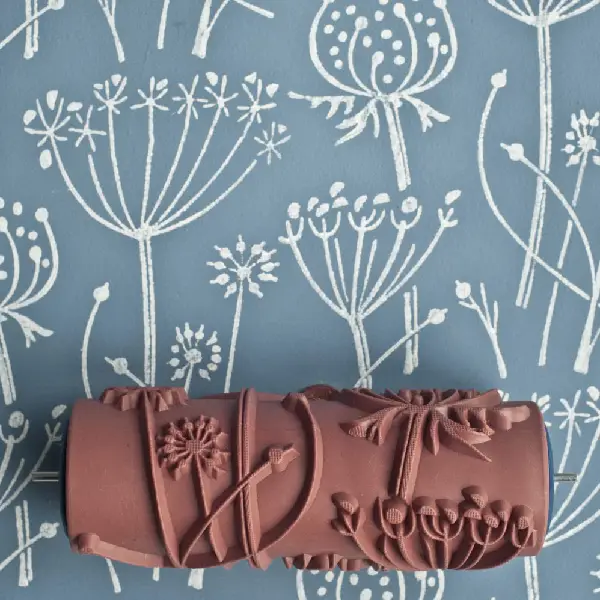
image sourced from here
These are specialist instruments created by the producer for certain textured paints. Although not required, using these rollers with textured paint could yield better results than using a more versatile textured paint roller sleeve.
5. Mini paint rollers
The small paint roller is the best option when a manual roller is too large to use on delicate surfaces or to fit into confined spaces.
They are available in several sizes, such as 2-inch, 3-inch, 4-inch, and 6-inch, so you may choose the ideal length for the job.

image sourced from here
Small-diameter tiny hot dog roller sleeves are used with specific types of mini rollers. Because of the roller sleeves' tiny diameter and short pile height, which mimic a little hot dog, they are known as mini hot dog rollers.
Painting in confined spaces and hard-to-reach areas, including behind the toilet, is made easier with the help of the thin roller sleeve.
How to Choose a Paint Roller
Here is a thorough guide to assist you in choosing the best roller:
- Roller Cover Material: explained above
- Roller Cover Nap: explained above
- Roller Frame: Wire Frame: Less robust yet lightweight and affordable. Compared to wireframes, plastic frames are more enduring and simpler to maintain. Metal Frame: Best for heavy-duty tasks, this is the most robust alternative.
- Roller size: explained above
- Paint Type: Oil-Based Paints: Apply using foam or natural fiber rollers. The best rollers for water-based paints are made of synthetic fibers.
- Roller Extension Pole: For regions that are difficult to reach, think about purchasing an extension pole.
FAQ
What are the different types of paint roller frames?
There are 6 types of roller frames: Standard Frame, Extension Frame, Angled Frame, Cage Frame, Jumbo Frame, and Specialty Frames.
Are foam rollers good for painting walls?
While conventional rollers work well on outside walls with uneven surfaces, foam rollers are best used on smooth interior walls. Foam rollers distribute the paint evenly by gliding across flat, smooth surfaces with ease. Foam readily absorbs liquids.
What roller nap is best for smooth walls?
Select a shorter nap (3/16" or 1/4") for smooth walls, such as freshly painted drywall, to provide uniform paint application and a flawless surface finish. Some painters often utilize a longer nap for more production since a shorter nap absorbs less paint.
What is a 4-paint roller used for?
Cabinets, Furniture, and Doors are the best suited for A 4" paint rollers.
Conclusion
Choosing the best paint rollers can be a difficult job to do if you have limited information about the best paint roller cover for interior walls.
Deciding how to choose the best paint roller depends on many factors, such as the size, fabric, and usage of the considered paint rollers.
- In this post:
- Important Tips When Buying the Best Paint Rollers
- Different Types of Paint Roller
- How to Choose a Paint Roller
- FAQ
- Conclusion



